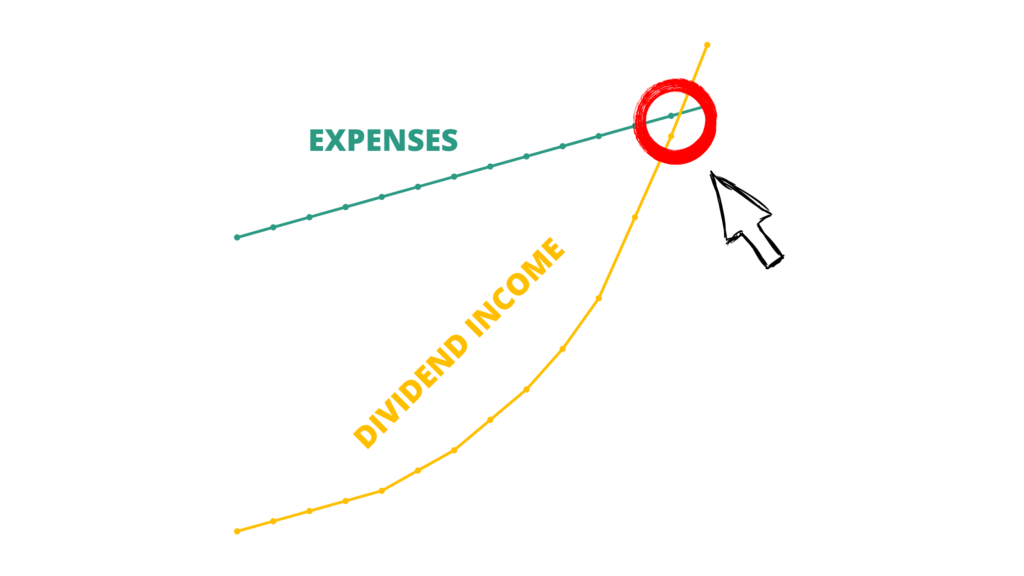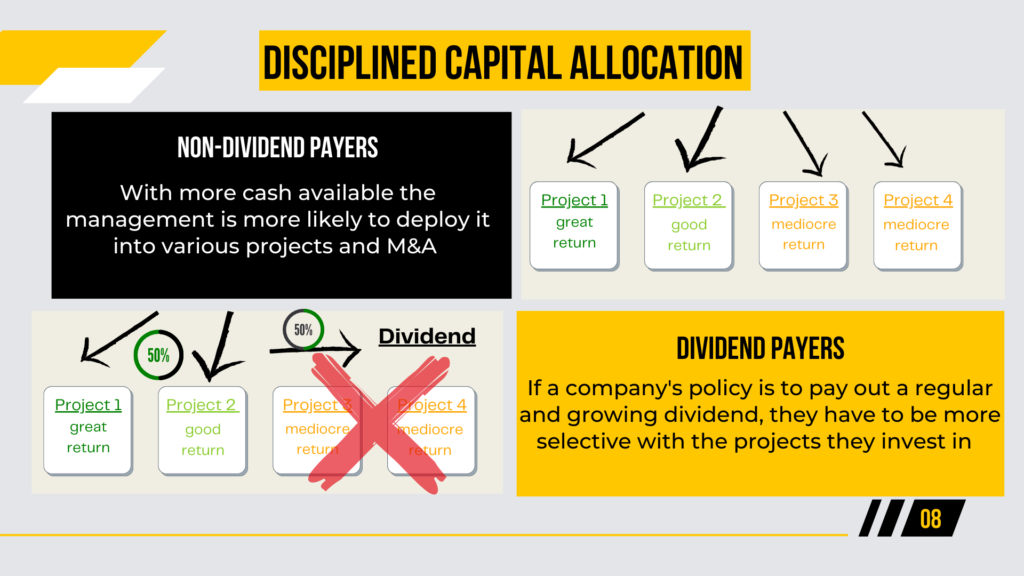What is Dividend Growth Investing
Dividend growth investing is an investment strategy aiming to provide a steady stream of growing passive income to achieve financial freedom.

It’s achieved by creating a diversified portfolio of select stocks that pay regularly growing dividends in all economic conditions.
What are Dividends?
Dividends are payments made by a corporation to its shareholders. These payments are paid out of the company’s profits and are distributed on a regular basis (quarterly for most U.S businesses). Dividends are a way for companies to share their profits with shareholders and provide them with a cash return on their investment.
Companies that pay dividends often have been around for a long time and don’t need to reinvest all of their profits.
Many companies pride themselves on consistent dividend payments to shareholders, regardless of stock market or economic conditions.
For instance, more than 84% of the S&P 500 companies pay dividends right now.
The decision about each dividend payment is made by the company’s board of directors and its amount depends on the company’s profitability, cash balance and its dividend policy.
When a company generates free cash flow, it can deploy it in different ways to create shareholder value:
- Re-invest in the business to drive future growth
- Pay down debt to strengthen the balance sheet
- Return cash to shareholders via dividends
- Repurchase shares
All these methods can be beneficial to shareholders if executed well.
However, paying a regular dividend is not only a direct cash-flow return which helps compound shareholder wealth and attract more shareholders – it actually makes the company a better steward of our capital.
If a company commits to a dividend policy it encourages management to allocate capital very efficiently by focusing on the most valuable projects and avoiding wasteful spending. As the company has to be very selective with the projects they invest in, it oftentimes results in a high Return on Invested Capital(ROIC) as the “hurdle” for any capital expenditure is higher.

Types of Dividends
1. Cash Dividends: The most common form of dividends, paid in cash directly to shareholders based on the number of shares they own.
2. Stock Dividends: Instead of cash, shareholders receive additional shares of the company’s stock based on a predetermined ratio. If the company is offering investors the choice of either cash or stock dividends – that is fine. However, if a company switches the usual cash dividend to a stock-only dividend it might be a sign of potential liquidity issues at the company.
3. Special Dividends: One-time cash payments made by a company, sometimes due to a significant event or a windfall, such as the sale of a subsidiary. Some commodity producers have the policy of paying a smaller regular cash dividend that grows every year and special dividends during periods of high commodity prices on top of that.
4. Dividend Reinvestment Plans (DRIPs): Rather than receiving dividends in cash or additional shares, shareholders can opt to have their dividends automatically reinvested into the company’s stock, sometimes at a discount and without broker fees.
Dividend Distribution Process
1. Declaration Date: The date on which the company’s board of directors announces the dividend payment.
2. Ex-Dividend Date: The date by which an investor must own the stock to be eligible for the upcoming dividend payment. After the ex-dividend date, the stock’s price typically drops by the amount of the dividend.
3. Record Date: The date on which the company determines the list of shareholders eligible for the dividend payment.
4. Payment Date: The date on which the dividend is actually paid to the eligible shareholders.
NB!
To receive the declared dividend you need to own it 1 day BEFORE the ex-dividend date.
